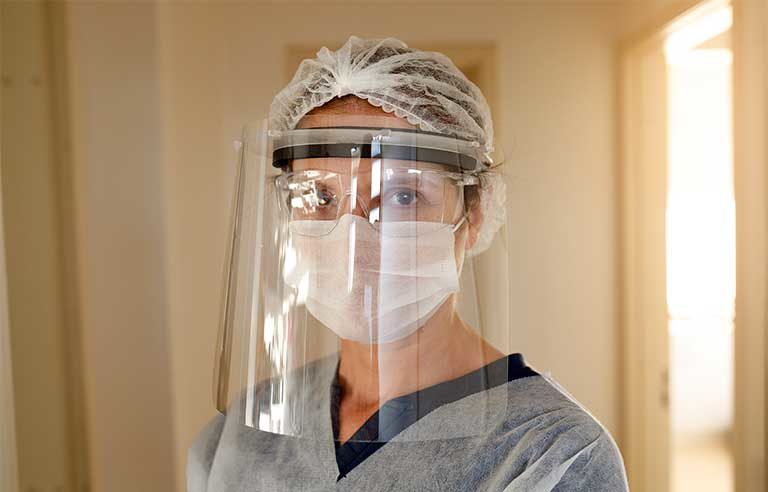COVID-19 pandemic: Health and safety experts call for more federal action on preventing transmission

Falls Church, VA — Former OSHA administrator David Michaels is among more than a dozen health and safety experts calling on the Biden administration to update and strengthen Centers for Disease Control and Prevention guidance to help prevent COVID-19 transmission.
In a letter dated Feb. 15, the group contends current CDC guidance and recommendations don’t address the need to limit exposure to small aerosol particles from breathing, talking or singing that “can remain in air and viable for long periods of time and travel long distances within a room.”
They continue: “Gatherings in indoor spaces without adequate ventilation place [people] at particularly high risk, an important component of which is driven by asymptomatic and pre-symptomatic viral shedding of infected individuals.”
The experts call on CDC to use up-to-date terminology from the National Academies of Sciences, Engineering and Medicine’s workshop on airborne transmission – “focused on routes of exposure” through touch, large droplets sprayed onto the body and inhalation of small aerosol particles.
The time needed for people to get vaccinated and the potential for more transmissible COVID-19 variants accelerate the need for the updated guidance, the letter states.
Among the steps the group calls on the administration to take:
- Update and strengthen CDC guidelines to fully address transmission via inhalation exposure to small inhalable particles from infectious sources at close, mid and longer range. Updated guidelines should be informed by a risk assessment model that focuses on source and pathway (ventilation) controls first, followed by respiratory protection. Workers in the highest risk categories – including those in health care and others with prolonged, close contact with infectious people – must be provided respiratory protection.
- Direct health care organizations to stop all “contingency and crisis practices.” That includes decontamination of N95 filtering facepiece respirators for future use and the use of non-respirator facepieces such as surgical masks as a substitute for respirators. Expand recommendations for N95 use to all health care workers and those in related sectors – “not just those with direct care of COVID-19 patients.” The standard should address requirements for effective respiratory protection for all health care workers and others at high risk of exposure.
- Coordinate a national effort to enhance and distribute the supply of NIOSH-certified respirators and ASTM International barrier face coverings for worker protection. Immediately identify existing supplies and help distribute them where they’re most needed.
- Use the Defense Production Act of 1950 to ramp up production of N95 filtering facepiece respirators (particularly models already certified and in wide use), elastomeric respirators, powered air-purifying respirators and high-quality barrier face coverings. Provide funding and enter contracts with manufacturers to increase supplies. Coordinate the supply chain and require the purchase of U.S.-manufactured respirators.
| Sign up for Safety+Health's free monthly email newsletters and get the news that's important to you. |
“Millions of NIOSH-approved N95 FFRs are now available and sitting in warehouses, with many employers reluctant to buy from new producers or believing there is no need for their use,” the group writes.
The letter is addressed to Anthony Fauci, director of the National Institute of Allergy and Infectious Diseases; CDC Director Rochelle Walensky; and Jeffrey Zients, coordinator of President Joe Biden’s COVID-19 task force.
Post a comment to this article
Safety+Health welcomes comments that promote respectful dialogue. Please stay on topic. Comments that contain personal attacks, profanity or abusive language – or those aggressively promoting products or services – will be removed. We reserve the right to determine which comments violate our comment policy. (Anonymous comments are welcome; merely skip the “name” field in the comment box. An email address is required but will not be included with your comment.)

